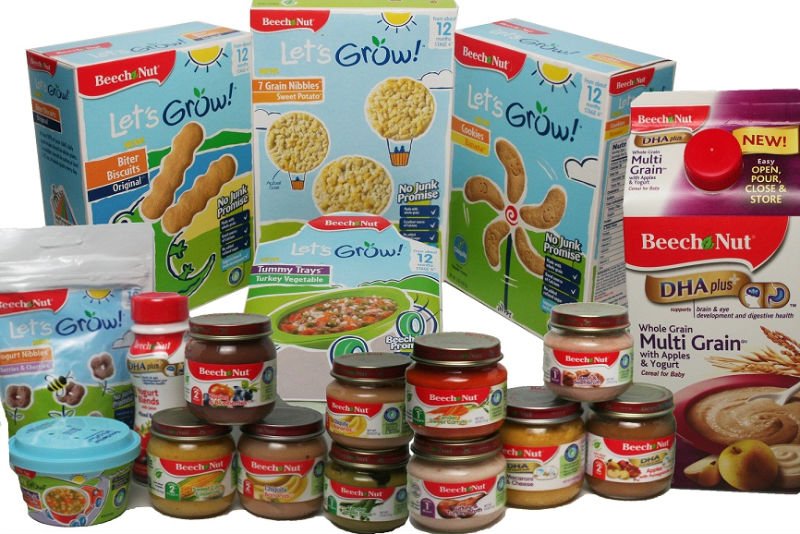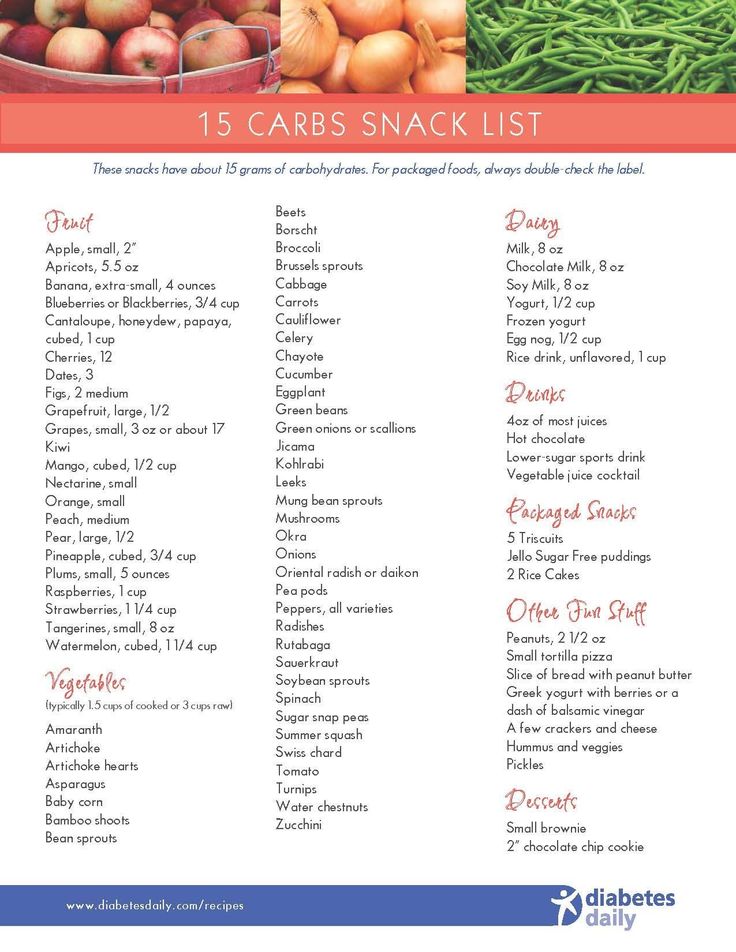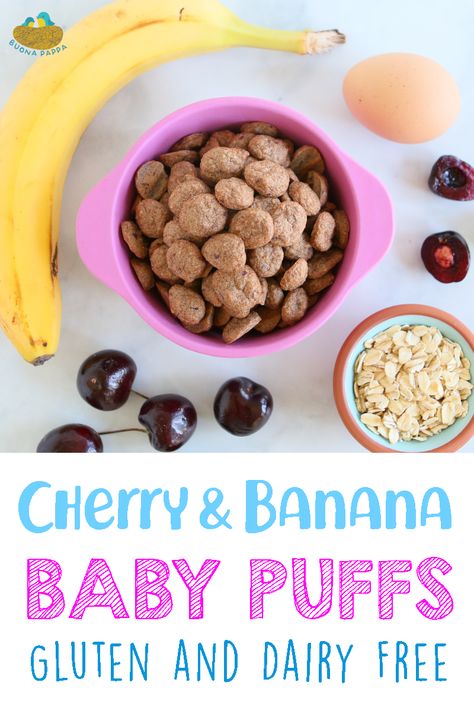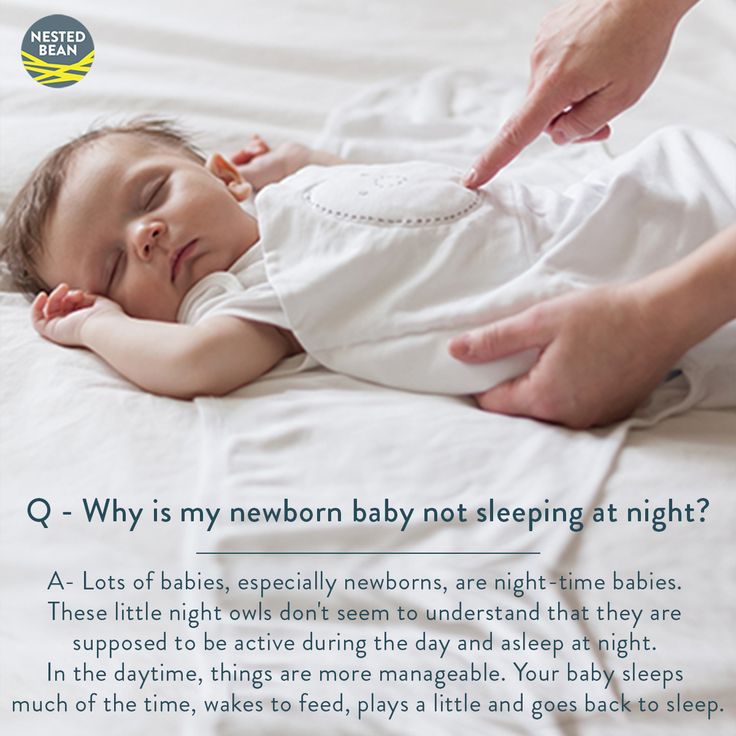Beech nut baby food vs gerber
Which Is The Best for 2022?
- About
- Latest Posts
The Baby Swag Team
We, the Baby Swag Team, are a bunch of passionate writers who are experienced moms and passionate nannies. We know how important it is to find the best baby gear, so we're here to help. We buy, test, and share our thoughts on baby products. We strive to give our readers the best alternatives available on the market related to baby care, infant milk formulas, strollers, and a lot of other related topics. We want nothing but the best for you and your babe!
Latest posts by The Baby Swag Team (see all)
There comes a time in every baby’s life when he or she is ready to start on solids. And when that point comes, you’re going to be just a little bit overwhelmed with all of the different options, like Beech-Nut vs Gerber Baby Food, and which to choose between the two.
With TheBabySwag SHOP, you can easily add products to your cart and checkout in-article.
Click “Shop Now” and follow the popup instructions. That’s all! As you read you can add more products to your cart.
Contents
- 1 Main Differences Between Beech-Nut vs Gerber Baby Food
- 2 Beech-Nut Baby Food Review
- 2.1 Beech-Nut Nutrition Features
- 2.2 Pros
- 2.3 Cons
- 2.4 Beech-Nut Reviews
- 3 Gerber Baby Food Review – Is Gerber Baby Food Safe?
- 3.1 Gerber Baby Food Features
- 3.2 Pros
- 3.3 Cons
- 3.4 Gerber Baby Food Reviews
- 4 The Verdict: Gerber vs Beech-Nut
- 5 FAQ’s About Beech Nut and Gerber
- 5.1 Question: Is Gerber food bad for babies?
- 5.2 Question: Is homemade baby food healthier?
- 5.3 Question: How long does Beech-Nut baby food last?
- 5.4 Question: What is the safest baby food?
- 6 Beech-Nut vs Gerber Baby Food: Final Thoughts
- 6.1 Further Baby Food Research
- 6.2 Recommended Baby Food
Main Differences Between
Beech-Nut vs Gerber Baby FoodThe Main Differences Between Beech-Nut vs Gerber baby food are:
- Beech-Nut ingredients are organic and have no preservatives or additives, whereas Gerber Baby does.

- Beech-Nut lids are for single-use, whereas Gerber baby food comes in jars that you can reuse because of the style of the lid.
- Beech-Nut is more affordable for most families, whereas Gerber Baby has a longer shelf life.
On the surface, they might seem like virtually the same kind of food option for your growing baby or toddler, but there are a few differences that set them apart from one another.
When you look at the consistency of the different baby foods, the different kinds of containers they both come in and, of course, the cost, you can see how they both differ from each other. You’re also likely to understand why one may be the stronger option over the other.
As with most baby foods, Beech-Nut comes in a variety of different flavors with options for young babies and even toddlers. Likewise, Gerber has not only a variety of different baby food options but also baby and toddler snacks to help them get used to solid foods.
That probably doesn’t make it any easier to choose between the two, but Gerber also tends to have a thicker consistency that your baby may have a hard time digesting at first.
Then again, Beech-Nut isn’t necessarily as easy to find in a pinch at the grocery store. The best thing to do is to compare them both and figure it out that way, but regardless, your baby is sure to have a healthy baby food option in either brand.
Beech-Nut Baby Food ReviewBottom Line Up Front: I much prefer giving my little ones the organic – clean ingredients without filler – found in Beech-Nut products here.
To make the healthiest baby food possible, Beech-Nut Baby Food uses the least amount of steps between putting ingredients together and cooking it. This ensures not only a pleasing flavor for your baby or toddler but also the right kind of texture that will agree with sensitive tummies.
Regardless of what foods you choose for your little one, all Beech-Nut baby food is made with 100% natural ingredients.
The company’s goal is to make authentic baby food from real ingredients, cooked in a way similar to how you as a parent would make it yourself.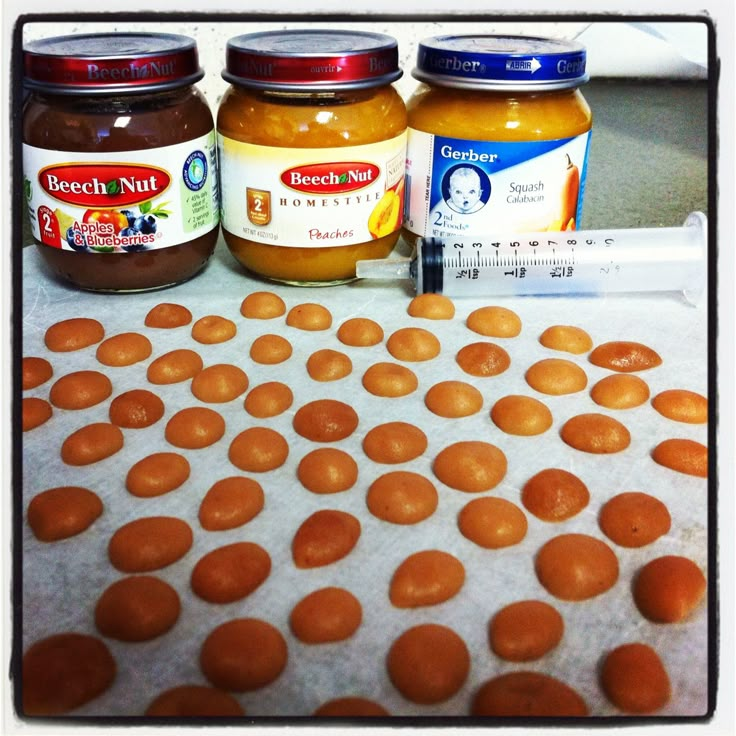 Beech-Nut uses the method of mixing and pureeing the food before it’s cooked, and the air is then taken out to preserve the freshness of the food.
Beech-Nut uses the method of mixing and pureeing the food before it’s cooked, and the air is then taken out to preserve the freshness of the food.
This means that there’s no need for any added ingredients, natural or artificial. Even the pouches and glass jars were explicitly chosen to keep the contents tasting normal. This way, there’s less of a chance of the taste of your baby’s food being affected by plastic containers, and you can be sure that the glass jar is safe and BPA-free.
From choosing ingredients to the actual packaging, Beech-Nut seems to have taken great care in their baby food every step of the way.
Beech-Nut Nutrition Features
- Flavors/Varieties: Beech-Nut Baby Food comes in yogurt melts, cereal puffs, granola bars, cereals, baby food jars, and baby food pouches. Flavors include apple and green beans, corn and potato chowder, and mango, chicken, curry, and rice.
- Age Range: Foods from the brand are made for children from four months and up.
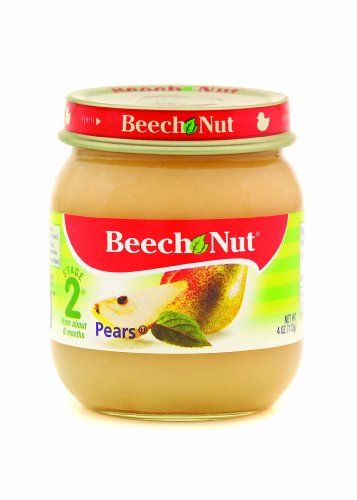
- Baby Food Container Style: The baby food comes in glass jars and pouches.
- Price: Shop Now with The Baby Swag.
- Where To Buy: You can buy it on Amazon or in-store at Walmart and Target.
- Has This Item Been Recalled?: While there are some complaints about Beech-Nut Baby Food, there are no recent or current recalls.
Pros
- Even if you don’t buy the organic Beech-Nut Baby Food, the ingredients are still all-natural and healthy.
- Unlike other baby foods, there are no added artificial ingredients.
- With glass jars, you can be sure that your baby’s food will come in safe and BPA-free containers.
- Beech-Nut has foods for babies of almost every age, including toddlers.
Cons
- While glass jars are safer for the contents, there is the chance of accidentally dropping and breaking jars of Beech-Nut baby food.
- Given the wide variety of flavors, there may be some specific food combinations that your child doesn’t like, so it’s more of a trial and error process.

- When you order packs of the jarred baby food online, you run the risk of receiving some broken jars in the box.
Beech-Nut Reviews
“I love Beech-Nut! Good consistency (and consistently so) and on target for the age range. Always smells and looks appetizing, with wholesome ingredients. Nothing to complain about and my daughter laps this up.” – Annie V. on Amazon.
“Both kids lived this brand. They make a variety of good flavors. What we like the most about it is how it’s organic. Plus it’s only made up of the two or three organic vegetables that are listed on the jar.” – Amrou Awaysheh on Amazon.
“Love these, all real ingredients and very healthy. Easy to travel with and my son loves them! Wish they were a bit more affordable, but for the quality, we will take it!” – Amy Curtis on Amazon.
“This is my son’s favorite! I love that it is thick and doesn’t drip off the spoon. I also love the ease of simply opening the cap instead of having to pull back hard to grip foil on other brands. ” – Amber L. on Amazon.
” – Amber L. on Amazon.
Must Try
Build a meal plan for your baby with Yumi
They make and deliver fresh baby meals each week. These are either blends and purées for babies, baby led weaning meal plans or finger food for older babies.
Check Pricing
We earn a commission if you click this link and make a purchase at no additional cost to you.
Gerber Baby Food Review – Is Gerber Baby Food Safe?With Gerber baby food, the brand ensures that the different fruit and vegetable combinations are just right for your little one thanks to the panel of babies who test out each new baby food before it hits the shelves. Gerber baby food is a well-known brand built on safety, so it is certainly trustworthy.
Each stage that Gerber offers brings something new to the table for babies to enjoy and become familiar with. 1st Foods are made to be as smooth as possible for easier digestion and the most part; they don’t contain too many complicate fruits or veggies to incorporate too early into your baby’s diet.
2nd Foods are equally as smooth, but they contain a wider variety of ingredients to further your child’s palate. Once you get to the toddler and crawler stages within Gerber baby foods, you can introduce your little one to baby food pouches and Lil’ Bits.
The Gerber Lil’ Bits are thicker than the other baby foods from Gerber, and they include recipes like Chicken Itty-Bitty Noodle Dinner and Farmer’s Market Vegetable & Turkey Dinner. Unlike Beech-Nut, most Gerber baby foods don’t come in glass jars, but there are different jars, plastic containers, and pouches to choose from, depending on what your baby likes.
Gerber Baby Food Features
- Flavors/Varieties: Gerber baby food offers fruit and vegetable squeeze pouches, organic jarred foods, small plastic containers, puffs, cereal, and cereal bars. The different food combinations include apple-strawberry-beet, pear-spinach, and herb vegetable pasta chicken dinner.
- Age Range: Gerber offers food for both babies and toddlers, starting with babies who can sit up supported.

- Baby Food Container Style: In addition to some glass jars, Gerber also offers baby food in pouches and plastic containers with peel-back films and plastic lids.
- Price: Shop Now with The Baby Swag.
- Where To Buy: You can buy Gerber baby food on Amazon or in-store at Target and Walmart.
- Has This Item Been Recalled?: There are no official recalls on Gerber baby food, but there are reports of trace amounts of metals being found in some varieties of the baby food.
Pros
- Compared to other baby foods, like Beech-Nut, Gerber baby food is a lot more affordable for some families.
- Each stage of the baby food is designed to be easily digestible for different children in the correct age and development stage.
- Because of the reusable lid on the small plastic containers of baby food, you can save any remaining food for later if need be.
- The first size, at two ounces, is just the right size for babies starting out with solids.
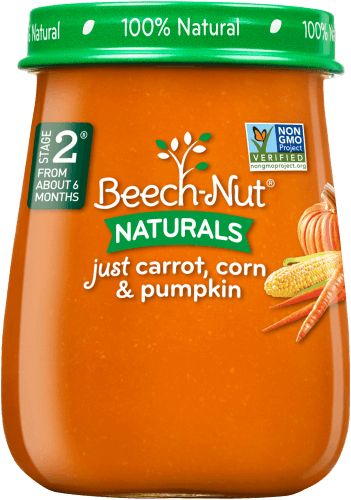
Cons
- Gerber baby food has a longer shelf life than some other baby foods, but that could mean that it has added preservatives that some parents may not love.
- To thicken some of the other more advanced Gerber options, cornstarch is added, which may not sit well with some babies’ stomachs.
- Some vegetables may be very bland or have almost no flavor, making them unpleasant for little ones.
Gerber Baby Food Reviews
“Great price and my kids love it — can’t go wrong. It sometimes is a bit cheaper than the grocery store, and comes to your door… what more could you ask for? I’ve never had quality issues with this.” – Laura B. on Amazon.
“So far I’ve purchased the flavors peas, carrots, butternut squash, pumpkin, and green beans. My baby loves them all. What’s more, is the convenience of purchasing them online and having them delivered in bulk to my home — so easy!” – R. Entler on Amazon.
“This is great for your little one, no artificial flavors or additives. But I found out after buying the stage 1, that stage 2 is cheaper, and you get more.” – Desiree Calora on Amazon.
But I found out after buying the stage 1, that stage 2 is cheaper, and you get more.” – Desiree Calora on Amazon.
“For the products — my baby loves this one. I feel good giving her something vegetarian (those little-jarred meat baby foods creep me out – how do they get the meat so gelatinous?!) which tastes somewhat like ‘real’ food instead of just plain veggie or plain fruit all the time.” – H. Harper on Amazon.
The Verdict: Gerber vs Beech-NutAt the end of the day, all that matters the most is that you find a baby food that your baby enjoys and that they can digest the easiest. When comparing Beech-Nut and Gerber baby foods, though, the stronger option seems to be the Beech-Nut.
It’s not only a little less costly, but it also tends to have fewer additives than the Gerber baby food options. Depending on your own child’s preferences, he or she may like the Gerber baby foods more, but it’s also hard to ignore that the consistency of Beech-Nut may be the easiest for little ones.
It’s a little thinner than the Gerber baby foods out there, which can be hard for some babies to get used to, but it may also be the easiest for babies just starting out on solids.
FAQ’s About Beech Nut and Gerber
Question: Is Gerber food bad for babies?Answer: While you might think that a puree would be the perfect meal for your baby, have in mind that Gerber uses additives and preservatives in baby food that it’s almost like you are feeding your baby a spoon of sugar.
Question: Is homemade baby food healthier?Answer: Making a homemade puree and juice from fresh fruit is definitely healthier than only buying pre-made food for your baby. However, always make sure that your kid’s meal does not exceed the recommended calorie intake.
Must Try
Build a meal plan for your baby with Yumi
They make and deliver fresh baby meals each week. These are either blends and purées for babies, baby led weaning meal plans or finger food for older babies.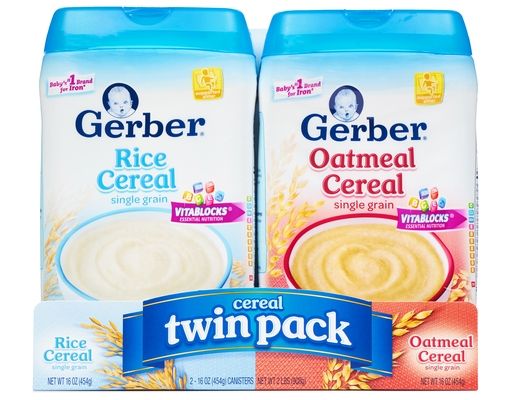
Check Pricing
We earn a commission if you click this link and make a purchase at no additional cost to you.
Question: How long does Beech-Nut baby food last?Answer: Beech-Nut baby food lasts 18 months, in comparison to other brands that also offer jarred baby food, whose shelf life is 24 months, and the main reason why is the lack of preservatives in the food.
Question: What is the safest baby food?
Answer: Both Beech-Nut and Gerber qualify as very safe baby food for your child!
Beech-Nut vs Gerber Baby Food: Final ThoughtsAs long as you’re giving your baby or toddler healthy baby food that they enjoy, then you’re doing something right. In this case, the Beech-Nut may be the stronger option, but both baby foods are plenty healthy in their ways.
Since both brands offer natural and organic options, that’s half the battle in finding the right healthy baby food for your child.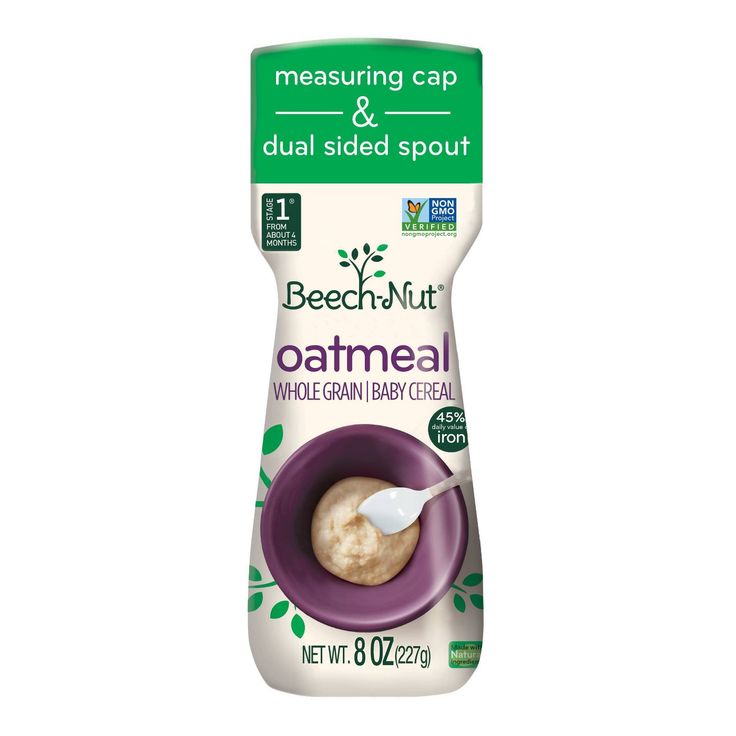 Choosing your baby’s first solid food can be hard enough without having to decide between two specific brands that have some clear differences from each other.
Choosing your baby’s first solid food can be hard enough without having to decide between two specific brands that have some clear differences from each other.
But while you may at first expect Gerber to be the winning baby food, in this instance, Beech-Nut is the way to go.
Further Baby Food Research
Definitely cross reference our frequently updated baby food recall list and our best baby food brand ratings for additional context.
- Best DIY Baby Food Makers
- Yumi vs Little Spoon Compared
- Gerber Gentle vs Soothe – Which Baby Formula is Best?
- Yumi Review: Is This The Best Baby Food to Opt For?
Recommended Baby Food
Page not found - The Baby Swag
We didn't find the posts for that URL.
Latest Posts
Black Friday and Cyber Monday baby deals are back! The Holiday buying (and saving) season is upon us. It’s time to stock up for baby. Whether you have a half …
Read More about Best Cyber Monday Baby Deals 2022: Strollers, Car Seats
I am by no means a crunchy momma.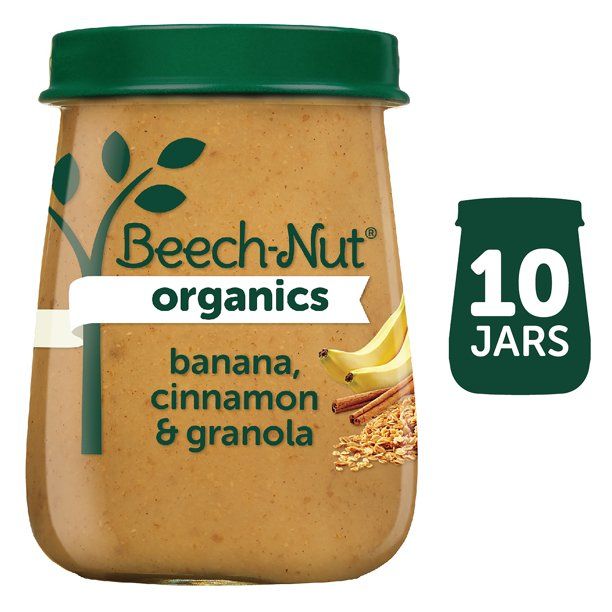 I feel like I fit in more with the scrunchy crowd; I limit non-organic foods, don’t put shoes on my baby when …
I feel like I fit in more with the scrunchy crowd; I limit non-organic foods, don’t put shoes on my baby when …
Read More about Naturepedic Changing Pad Review
It can be a minefield to choose the right formula for your baby. If you’ve decided not to breastfeed or wish to combine your own milk with baby formula, it’s …
Read More about Aptamil vs Enfamil Formula [2022]: Which Is Better?
Determining how to pick the best baby formula for your little one can often be a challenging task. After all, there’s so much that you need to check – the …
Read More about Hipp vs Aptamil [2022]: Which Baby Formula is Best?
It is never a walk in the park for most parents shopping for baby formula. And this is almost entirely due to the long lists of ingredients, intimidating medical and nutritional jargon, unpleasantly long and detailed regulations, and of course the little to no time to juggle between nursing and researching.
It is for these reasons that we have detailed comparison between Kendamil vs Hipp to help you make an educated decision.
One that can only be drawn after getting the right synthesized information about the formulas’ ingredients, their honest user reviews, their pros weighed against their cons, and of course alternatives in case the two run out of stock or don’t sound just right for your bab
Read More about Kendamil vs Hipp: Which Baby Formula Is Safer?
Getting the right baby formula is an important choice that all parents will have to make. The problem is, there are so many brands out there – where do you begin? To help narrow down your search and to make life that little bit easier, this review will cover Similac Advance vs Sensitive. Both are manufactured by popular baby brand Similac, but as you’ll see throughout this guide, they’re both two very different formulas.
In this guide, we’ll talk you through the pros, cons, and key features of each baby formula. By the end, we hope you’ll have a clear understanding of what either can offer your infant when it comes to nu
By the end, we hope you’ll have a clear understanding of what either can offer your infant when it comes to nu
Read More about Similac Advance vs Sensitive – Which Baby Formula Comes Out on Top?
When it comes to diapers, there’s actually quite a lot of difference between the different types available. Because of this, we’re about to review Huggies Snug and Dry vs Little Snugglers to see which one is best. While both are made by Huggies — one of the best known, most loved diaper brands — does either one stack up?
From the size and fit to the material, everything has to be just right for your baby. You also need your diaper to be absorbent, comfortable and kind on your baby’s skin. Each baby is different, so you might need to try a couple of different makes before you find the right one.
If you’re considering these diapers or want to find
Read More about Huggies Snug and Dry vs Little Snugglers: Which Diaper is Best?
Some days, I don’t have time to shower or eat. On other days, I’m balancing so much that I forget some things at the grocery store. I’m a bit embarrassed …
On other days, I’m balancing so much that I forget some things at the grocery store. I’m a bit embarrassed …
Read More about Hello Bello Subscription Review: Hello Bello? More Like Hello GOODBYE!
An ultralight baby stroller is a must for every mom who wants to spend time with her baby actively. But which one to choose? In this Evenflo Reversi Stroller review, I’ll …
Read More about Evenflo Reversi Stroller Review: A Great Lightweight Model At a Decent Price
Meet my son, Nathanael. Nate’s a little different than most babies. He has Severe Hemophilia B, which is a serious bleeding disorder. There was a 1 in 30,000 chance my …
Read More about Squishable Picnic Line for Babies Review
BLEDINA - DANONE BABY FOOD products South Africa BLEDINA
Home > All Categories > Others > BLEDINA - DANONE BABY FOOD
minimum order / keychain price
| ≥1 piece |
- Origin South Africa
- production capacity
- Category Other
- update time 2017-08-22
company profile
product details
- Origin: South Africa
Our selection of great products from bl閐ina bl閐ine includes
bledin leguminous vegetable cereals,
cereals pour bebe biscuitee baby,
muesli pour babies cocoa cocoa crumb,
bl閐ine saver vanilla/ vanilla flakes.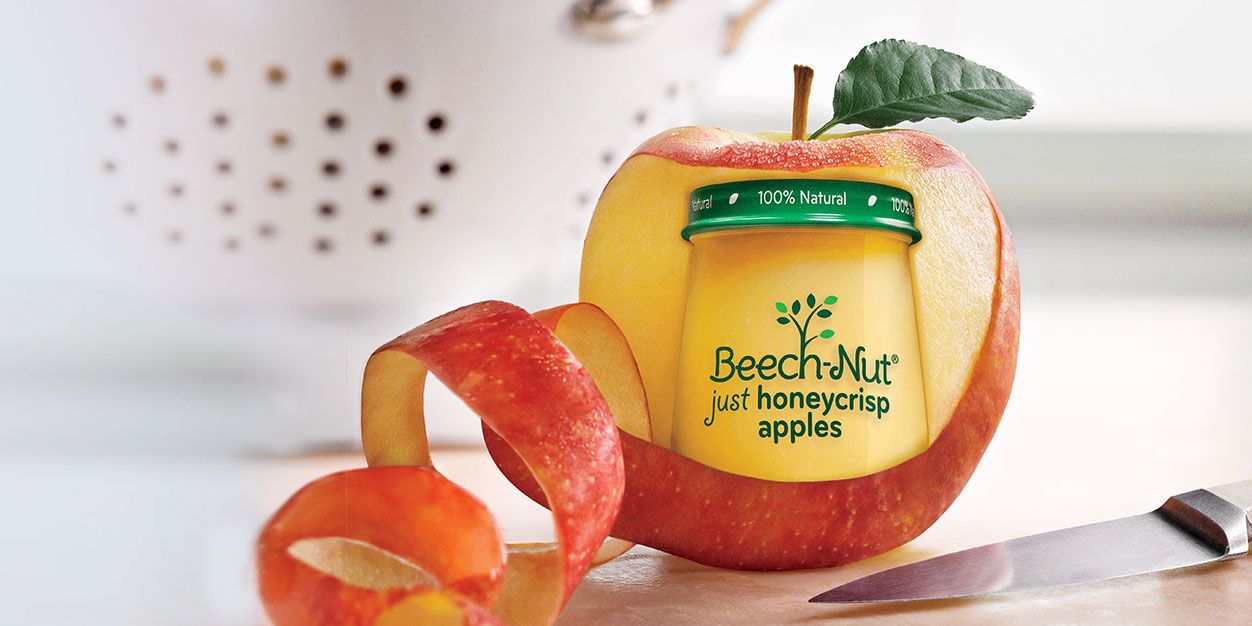
You May Also Like
-
Beech Nut Baby Food -
SGM - DANONE BABY FOOD -
BLEDINA - DANONE BABY FOOD -
Gerber, 2nd products, baby food - variety of packaging available -
Holle, Organic Baby Food Baby Flakes, 250 g from 6 months -
Danalac baby cereals / baby food - European origin -
Nutriceal baby food mixed with water or milk -
Baby Food Bambix Porridge (Large Assortment) -
LLC Baby Food/ Baby Puree Porridge -
Nestrum Chocolate Baby Food -
Ingredients: organic baby food rice flakes 250g -
Gerber baby food DHA and rice probiotics
related searches
baby food children food First meal baby food baby food fruit baby food puree wholesale baby food organic baby food baby food clean baby food organic halal baby food baby food porridge branded baby food baby food caricare friso baby food baby cereal food
Baby food: ✔Gerber ✔Nutrition ✔Baby ✔Nestle
It's amazing, but baby food is a little over 150 years old.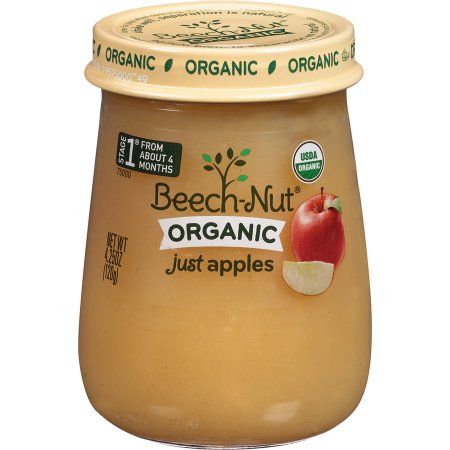 No, before that, of course, children were also fed, but not in the same way as today. Modern mothers, if necessary, can replace breast milk with a similar analogue in composition and safely diversify the children's menu. We are talking about mixtures and complementary foods from jars and bags, which, with their appearance, changed the centuries-old diet. And before that, they didn’t feed babies with anything!
No, before that, of course, children were also fed, but not in the same way as today. Modern mothers, if necessary, can replace breast milk with a similar analogue in composition and safely diversify the children's menu. We are talking about mixtures and complementary foods from jars and bags, which, with their appearance, changed the centuries-old diet. And before that, they didn’t feed babies with anything!
In ancient Greece, children were given thin barley stew as the first food, to which they added bull's blood in Sparta so that the boys would grow up to be real warriors.
Mammal
I would not like to make it an absolute custom to feed children food so that they do not scream for nothing, but there is something in it. At least the mouth is busy for a while. Well, if mother's milk. But not everyone was lucky. So the she-wolf raised Romulus and Remus, according to this myth. And the ancient Greek gods, starting with the main one, Zeus, grew up on the milk of goats, although they also claimed the breasts of mother goddesses.
In the Middle Ages, baby bottles were made of leather and wood. At the beginning of the 19th century, they began to produce porcelain teats with leather or suede teats.
In different countries at different times, milk from almost all animals capable of producing it was used, that is, for the benefit of baby food. The babies left without mother's milk were fed by goats and cows, sheep and camels, llamas and donkeys.
It is not documented, but the story that one of the children of Charles Darwin was fed with donkey milk has not yet been forgotten. Apparently, the English naturalist made a natural selection - he chose a donkey as a wet nurse, believing that her milk is closest in composition to human milk.
Drink, children
AG Venetsianov “A nurse with a child” • source: wikimedia.org / СС BY Children were deprived of mother's milk not always by nature. Sometimes women themselves refused to feed their offspring. The poor were hindered by work, the rich by whims. In the Middle Ages, it was believed that breastfeeding distracted the mother from the birth of other children, and in modern times - from secular life. A woman of a noble family had to give birth to as many children as possible, and any other woman could feed them. This approach led to the fact that in Europe and Russia, wealthy mothers gave newborns to nurses. In France, this tradition was most widespread. In the second half of the 18th century, the first agencies for hiring wet nurses appeared in Paris.
In the Middle Ages, it was believed that breastfeeding distracted the mother from the birth of other children, and in modern times - from secular life. A woman of a noble family had to give birth to as many children as possible, and any other woman could feed them. This approach led to the fact that in Europe and Russia, wealthy mothers gave newborns to nurses. In France, this tradition was most widespread. In the second half of the 18th century, the first agencies for hiring wet nurses appeared in Paris.
The authorities united four such agencies into a municipal nursing office, which protected their rights and guaranteed their wages. The bureau survived the French Revolution and closed in 1876. But then dry milk formula was already invented and distributed throughout Europe.
Milk replacement
Henri Nestlé , founder of the Nestlé company • source: wikimedia.org / CC BY The loss of a stable income for a breadwinner is due to science. Since the beginning of the 19th century, European scientists have been trying to invent a scientifically based alternative to mother's milk. And the necessary conditions for this gradually developed: they learned how to preserve and disinfect products, and in 1855 the Englishman Grimweid invented powdered milk. But, if not for Henri Nestle, all these discoveries might have existed on their own.
Since the beginning of the 19th century, European scientists have been trying to invent a scientifically based alternative to mother's milk. And the necessary conditions for this gradually developed: they learned how to preserve and disinfect products, and in 1855 the Englishman Grimweid invented powdered milk. But, if not for Henri Nestle, all these discoveries might have existed on their own.
Henri Nestlé's Milk Flour
source: blick.ch / СС BY
Nestlé's problem of baby food affected Nestlé after the birth of his first child, who was not suitable for mother's milk, and progressive at that time parents did not want to feed cows. A certified pharmacist and pharmacy owner in a Swiss town in 1867 made a mixture of powdered cow's milk, wheat flour and sugar, which he called "Henri Nestlé's Milk Flour". Diluted with water, it became the world's first artificial baby food.
Poster "It's good for children", A. Dobrov (1958) • source: materinstvo.ru / CC BYPost passed
The duration of breastfeeding in pre-revolutionary Russia was set by the church and was three strict fasts (only Great and Assumption were taken into account ).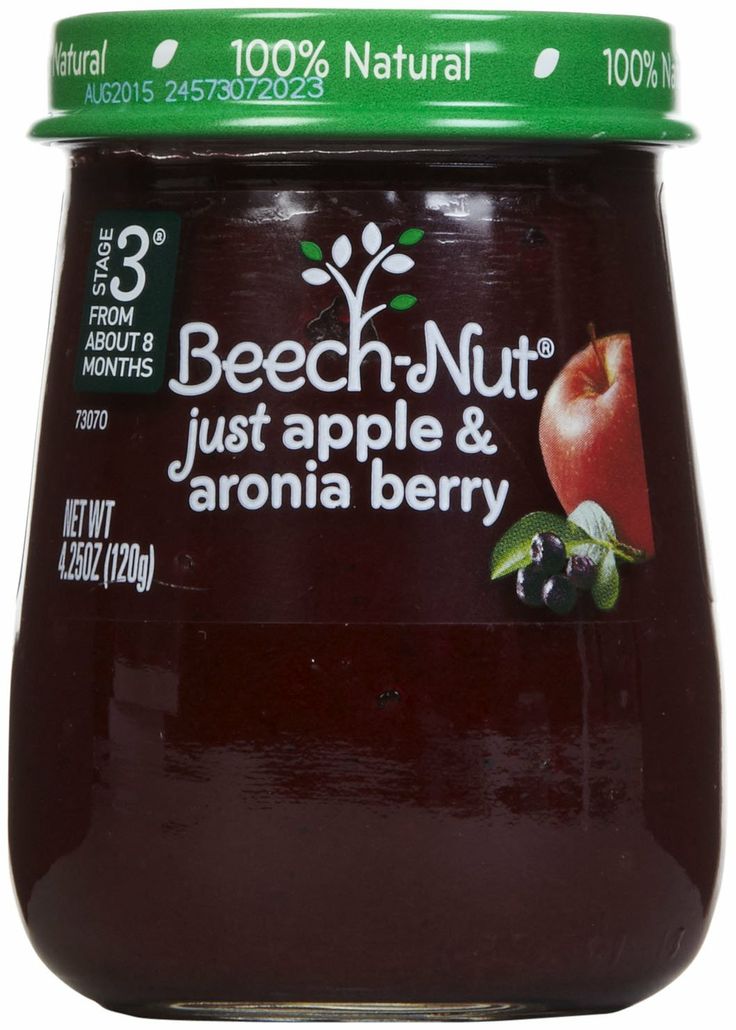 These terms were not strictly related to age and depended on the time of birth. If a child was born during Great Lent, they were fed from Dormition to Dormition; if after the Dormition Fast (the Great was considered the first, the Dormition Fast was the second, the Great again was the third), then they were fed until almost two years old and were weaned only before the Dormition Fast.
These terms were not strictly related to age and depended on the time of birth. If a child was born during Great Lent, they were fed from Dormition to Dormition; if after the Dormition Fast (the Great was considered the first, the Dormition Fast was the second, the Great again was the third), then they were fed until almost two years old and were weaned only before the Dormition Fast.
Mixture and only
Martinus van der Hagen ,founder of the Nutricia company • source: wikimedia.org / СС BY
Feeding babies has become unprecedentedly simple: opened a jar, diluted its contents in water - the baby is full, calm and well-fed. The last option is a consequence of a considerable amount of sugar in the first mixtures. This was taken into account by the Dutchman Martinus van der Hagen, who in 1896 invented his own method of drying milk in a bakery.
Its milk formula contained significantly less flour and sugar than that of its main competitor, and therefore received the approval of the then doctors and, largely thanks to them, became popular. Thus began the history of Nutricia. In the US, they also appreciated the charm of a new way to feed hungry children. The production of baby food was put on stream by Clapp's Baby Food and Beech-Nut.
Thus began the history of Nutricia. In the US, they also appreciated the charm of a new way to feed hungry children. The production of baby food was put on stream by Clapp's Baby Food and Beech-Nut.
source: artinvestment.ru / CC BY
Russia was still a few decades before the opening of its own production of baby dry mixes "Malyutka", on which a good part of Soviet toddlers will then grow. And exactly one hundred years before that, in 1872, “milk flour” began to be sold in St. Petersburg, and then throughout the country, the agent of the Nestlé company, Alexander Wenzel. The merchant advertised a new product in the newspapers of that time: a girl, satisfied with life and the taste of milk flour, joyfully licks her finger next to a source of full pleasure - a can of mixture at a price of 1 ruble 10 kopecks. But not everyone was appreciated and not immediately. And even more so where the press was not able to read.
The old fashioned way
The final weaning from breast milk in pre-revolutionary Russia took place in the period from one to two or three years and was expressed in the change of the nickname "sidun" to "hodun". Often it happened "for berries", that is, in the summer months, when berries and fruits ripened, which were given to children "to calm down" - as a consolation.
Often it happened "for berries", that is, in the summer months, when berries and fruits ripened, which were given to children "to calm down" - as a consolation.
The farther from the capitals, the less was not only dry mixes, but also knowledge about them. Children continued to be fed by other women for money or thanks, they were given diluted animal milk and they began to supplement them very early. Usually liquid boiled porridges. In Europe - oatmeal, in Asia - rice, in Russia - semolina and semolina. In pre-revolutionary Russia, in addition to cereals, a child already six months old usually knew the taste of potatoes, onions, cucumbers, including pickles.
Some Soviet pediatricians, and after them mothers and grandmothers of that time, believed that it would be good for children to taste salty milk after sweet milk. So often two-three-month-old babies were given to suck on a chicken bone, a crust of black bread, pickles or lard.
It was considered normal to feed him cabbage soup and sauerkraut.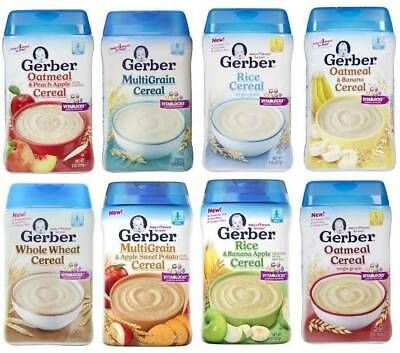 Even earlier, they gave "zhevka" - a cloth with wrapped chewed bread, sometimes soaked in sweetened water, kvass or home brew. However, this idea - to occupy a child's mouth with a rag with dubious contents from the point of view of hygiene and pediatrics - was adopted from Europe. It’s just that in our country she stayed longer than in her “homeland”.
Even earlier, they gave "zhevka" - a cloth with wrapped chewed bread, sometimes soaked in sweetened water, kvass or home brew. However, this idea - to occupy a child's mouth with a rag with dubious contents from the point of view of hygiene and pediatrics - was adopted from Europe. It’s just that in our country she stayed longer than in her “homeland”.
And so, when the rag was already taken out of the mouth, but they were not yet invited to the common table, and the children continued to be indignant, they had to somehow get out. More precisely, twist gauze with chopped vegetables and fruits so that they give all their juices for the benefit of children's health. By the way, they just started to take care of him. Enlightened minds have finally traced the connection between what children eat and how long they live without suffering from disease.
Until the beginning of the 20th century in Russia, a horn hollowed out of a cow's horn was used as a pacifier. The contents were knocked out of it and a groove was made at the end for pulling on the "tit" - the nipple of the cow's udder, which was soaked in milk, vegetable oil, sugar and honey water.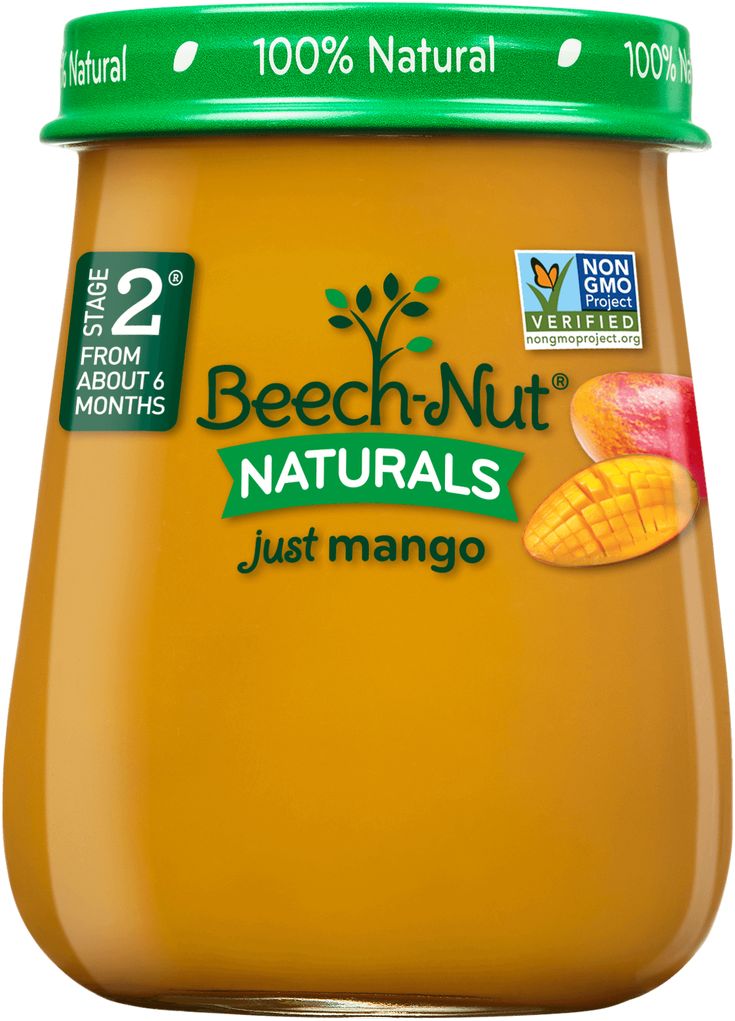
And from a can is easier
source: wipo.int / СС BYBy that time (1870) Henri Nestle had released a novelty - condensed milk. It was invented back in 1856 by American Gail Borden, but it was Henri Nestle and his company who made condensed milk a popular children's treat. True, the doctors were unhappy: few followed the recommendation to dilute condensed milk with water in a ratio of 1 to 10 and only then give it to children.
They ate condensed milk with spoons, sometimes with jars. And this, of course, led to rapid weight gain. Doctors insisted: it is better to feed children with vegetables and fruits. But twisting the gauze is already pretty tired. And then there were jars.
Daniel Frank GerberChildren and their nutrition were not particularly awe-inspiring not only in the dark times of the Middle Ages, but also in the century before last. We already heard something about hygiene and even visited doctors, but, of course, there was no special children's menu.
On the contrary, children in even the poorest families of the 19th century were fed what was worse.
founder of the Gerber Company
source: wikimedia.org / SS BY
Michigan manufacturer Daniel Gerber established the first large-scale production of canned food for children. It was again a matter of personal interest—the need for special nutrition for Sally's daughter. Gerber's wife learned how to make vegetable, fruit and meat puree for a sick child, and then convinced her husband to start mass production.
In 1928, baby food from Gerber Foods went on the market. It is still there.
Dairy kitchens and non-dairy rivers
Children in our country also wanted to eat. Especially those who lacked scarce imported food. In the 1920s, dairy kitchens appeared, where milk mixtures, fermented milk products, cottage cheese were made from fresh products, and juices and mashed potatoes were made from fruits and vegetables.
In the 1950s, mass production of baby food began in the Soviet Union: canned juices and purees, powdered milk mixtures, cereals and kissels. Since then, for several decades, dairy kitchens did not prepare food, but simply gave out jars and bags.
In the 1950s, complementary foods were started as early as 2-4 months, and if the child is bottle-fed, then even earlier. And this is not only a Soviet trend.
In the first edition of the well-known book by the American doctor Spock on the upbringing of children (1946), there is this passage:
“Many doctors now recommend giving meat from 2-6 months. Meat for a small child is either turned in a meat grinder several times, or rubbed through a sieve, or rubbed on a grater. Therefore, it is easy for a child to eat it, even while he has no teeth.”
Kids of the 1970s owe a lot, if not to everything, to these dairy kitchens, dry mixes "Malyutka", and also to the canned food of the Odessa Cannery and the Moscow Poultry Plant. It was fashionable to eat from jars, boxes and tubes, because the main characters of that time, the astronauts, ate like that.
It was fashionable to eat from jars, boxes and tubes, because the main characters of that time, the astronauts, ate like that.
The glass feeding bottle was patented in 1841 by Charles Windshiel of Massachusetts.
Approximate scheme of complementary feeding "in the Soviet way" according to the recommendations of the Ministry of Health 1976 years
- 1 month - fruit juices
- 1.5 months - applesauce (grated apple)
- 3.5 months - cottage cheese (dairy)
- 4 months - egg yolk
- 4.5 months - vegetable puree
- 7 months - meat
As for today's children, the whole world industry and the conviction, supported by the opinion of pediatricians, that they need special nutrition, work for them. And now there is such an abundance on the children's table that even an adult will envy. Formulas for artificial feeding of infants are produced highly and partially adapted, that is, close in composition to breast milk, and also casein, medicinal, with thickeners and lactose-free, where whey is replaced by no less nutritious soy protein.